THE FUTURE IS OURS: Humanity, Technology, and the Power of Narrative
How is technology making life better, worse or more complicated for filmmakers and audiences? In a panel discussion at Film Independent’s Sloan Summit – a weekend celebrating the Alfred P. Sloan Foundation’s science and technology Film Program – moderator Anisa Hosseinnezhad (filmmaker, IDA) led a discussion on the potential and the problems with tech advancements in the arts.
The panel featured traditional filmmakers and XR creators – innovators and thought leaders in narrative design – in a passionate discussion of the future of technology to tell stories.
THE CREATIVE POTENTIAL
With machine learning, AI tools and VR headsets, how are tech tools offering us new creative freedom?
For artist Nancy Baker Cahill, VR led to an entirely fresh and visceral way of creating. Using Augmented Reality to spin a design through real environments, Cahill found a way to invite viewers into her work like never before.
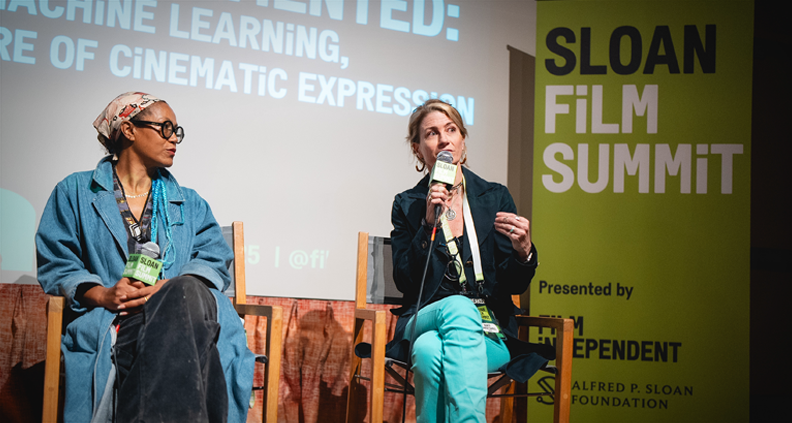
“People who experienced them reported feeling the drawings in their bodies, and that was an intoxicating idea to me,” Cahill said. “I thought, how could I amplify that feeling? How could I take that and turn it up to 11?” After struggling through options with 3D and haptics, the prospect of VR came as a light bulb moment.
Cahill now shares her drawings through 4th Wall, a free app that lets viewers experience each piece in any environment they choose.
For Jessica Brillhart, VR made an emotional connection that caught her entirely off guard. As a filmmaker for Google, she was invited by a group of engineers to experience a prototype 360 VR rig. “I kind of tried to ignore them,” she admitted, before finally going to see what they were pestering her about.
The first few stitches they showed her had Brillhart in a state of confusion. When they finally showed her an impromptu recording with no audio phasing, no clues to observe, she found herself among a group of engineers playing with the thing they made. “I can’t even describe how emotional this thing was, and it was literally just a bunch of engineers hanging out. It was literally just engineers who had turned on the rig for the first time, and they were just so happy that it worked so they’re waving at it. They were throwing shit at it. They were like, skipping around it. They were just laughing and having the best time.”
The line between filmmaking and technology was blurred in a way that Brillhart had never seen or made in any traditional medium, and that compelled new work. “It has been a bit like falling forward awkwardly, ever since.”
ETHICS & OPPORTUNITIES
Rwandan filmmaker Anisia Uzeyman (Neptune Frost) pushed the artistic limits of the iPhone 4 in order to make her first feature in 2016, Dreamstates. Fueled by a desire to showcase underrepresented skin colors and an opportunity to tour the United States with a band of musicians, Uzeyman had an idea for a film.
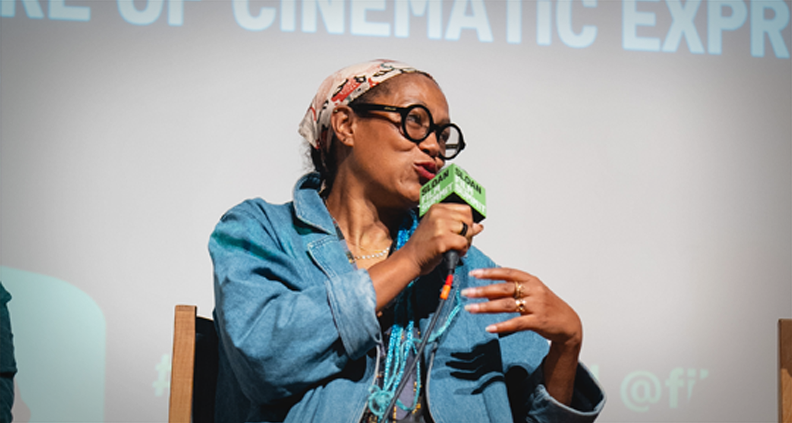
“I went to see producers and people trying to get a camera, trying to get stuff to be able to actually just witness something that I thought would be very interesting, and nobody gave me anything.” The room laughed with Uzeyman, because really who hasn’t had this experience? But the communication machine in her pocket gave Uzeyman the freedom to greenlight her own vision.
Aranya Sahay (Humans in the Loop) explored opportunities in technology for rural Indian women through Nehma, the lead character in his film about a tribal woman who becomes a data annotator for India’s burgeoning AI industry.
“Can AI ever represent the reality of an indigenous woman?” Sahay asked. “She’s working to enable it in this film, but can she find her own identity in it?” In his conversations with women in Jharkhand, India, Sahay heard about interconnectedness. Centuries of knowledge systems handed down colloquially, like mycelium among trees – systems that were deemed primitive by colonizers.
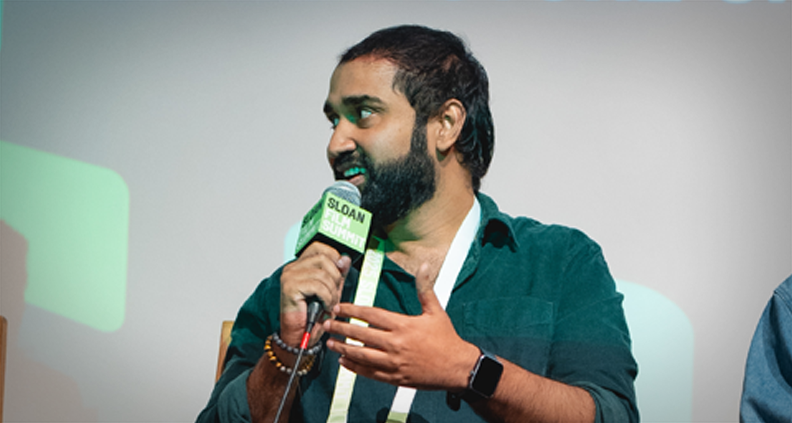
“I kind of noticed that there is an agency that they’re beginning to assert … for example, there’s a scene in the film where she’s told, ‘Okay, there’s a plant that you have to label as a pest. Now, pest is a value term, right?” Nehma has the opportunity through her job to resist a top-down value system and choose to protect the plant instead of killing it.
Sahay acknowledged the double-edged sword of high-tech cinematic tools, especially as regards inherent bias. “What is the training method?” Sahay asked. “How much diversity is there in training, data, etc?” Filming in India with AI tools primarily trained for fair skin, Sahay’s team had to create workarounds for the images that AI could not “see.”
Uzeyman referenced TikTok filters that were blind to black skin, stating, ”It is a long history in
the story of what’s visible and invisible in technology.” Cahill agreed with the ongoing frustration next to the potential for human connection through technology. “I think a lot about who it helps and who it harms,” she added. “But if we are going to use these tools – these tools whose very existence relies on forced labor disproportionately absorbed by the global South – how do we use them in a way that is responsible, compelling, and engenders some kind of human connection?”
THE FUTURE
Uzeyman expressed disillusionment with tech tools as the future of filmmaking, given the human motives driving those innovations. “Where all those have been, I think invested in by police states … There is nothing magic about it, that it’s all man-made.” If the expectation is to focus on big business and money-making, rather than openness and accessibility, then what framework will make these changes truly worthwhile for humanity, community, and connection?
Brillhart observed the juxtaposition of control. As a traditionally trained filmmaker, she was used to controlling the narrative for audiences. The human agency of VR led to an entirely different “mess – you can’t control mess,” she pointed out. “I would not even put immersive entertainment and AI in the same group, because the crux of control is very different between the two things.” Whereas immersive invites control, AI is a system for which the control is inherited – even the creator does not control it. Whoever owns the system controls AI. “Control is the future.”
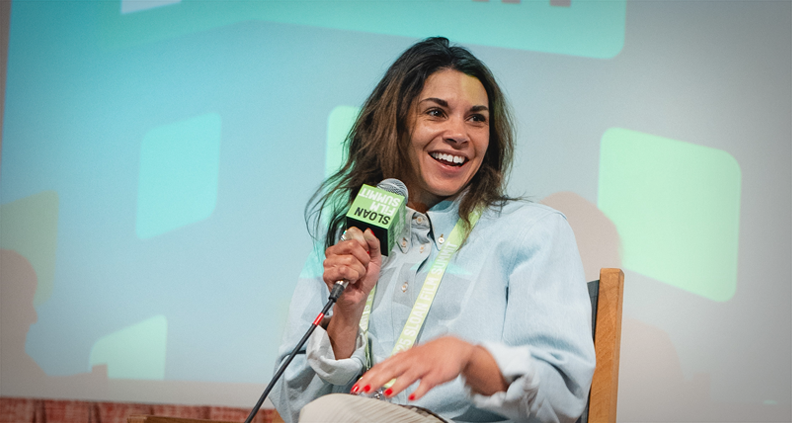
Uzeyman brought it back to the heart of the matter – narratives. “Because I’m interested in telling stories about power and disempowered people. So at the end of the day, I think technology is very ancient.” Referencing her 2021 sci-fi romantic musical set in a post-civil war Rwanda, Uzeyman described how she explored human engineering through story. “Our internal engineering that intersects so many things. Community as technology. So, in a way, it’s tech versus organic life. You know, there is something in that relationship that I think is essential. And it’s essential to understand that in that intersection, we are the greatest technology.”
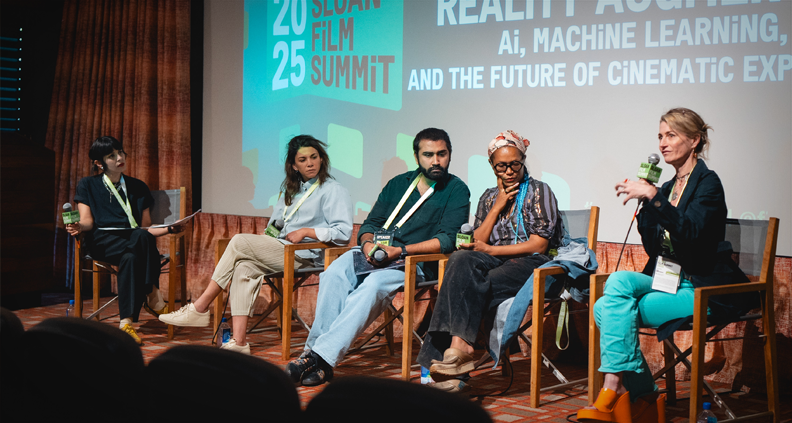
The Sloan Film Summit, launched in 1999, is part of Sloan’s greater efforts through its Public Understanding of Science and Technology initiative. Celebrating eight iterations, this year’s Summit (the fourth consecutive one produced by Film Independent) is a celebration of the program’s wide-ranging success supporting emerging filmmakers, while also bringing together a new group of artists and scientists to highlight how art and science interact and collaborate.
We’re thrilled to celebrate the arts and sciences with inspiring minds in both fields.
For over 40 years, Film Independent has helped filmmakers get their projects made and seen. The nonprofit organization’s core mission is to champion creative independence in visual storytelling in all its forms, and to foster a culture of inclusion. We support a global community of artists and audiences who embody diversity, innovation, curiosity and uniqueness of vision. To support our mission with a donation, click here.
Keep up with Film Independent…